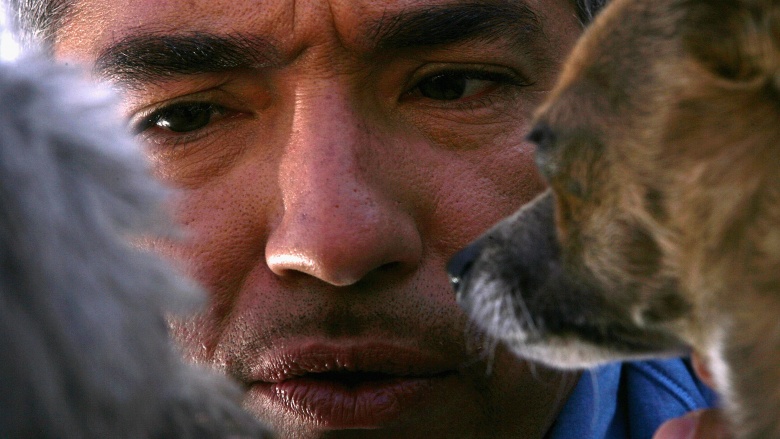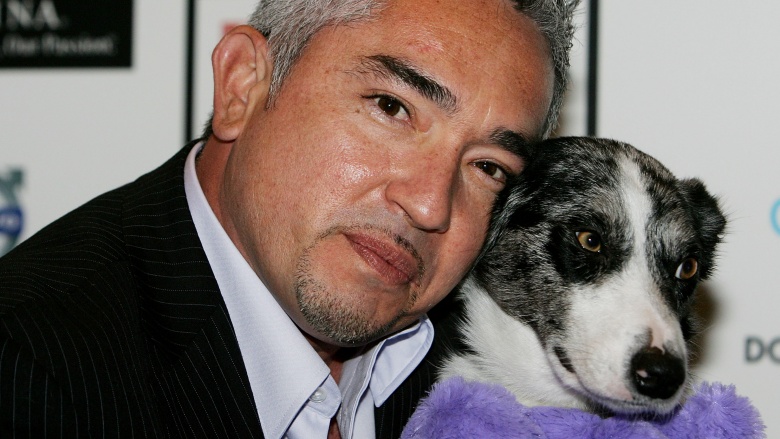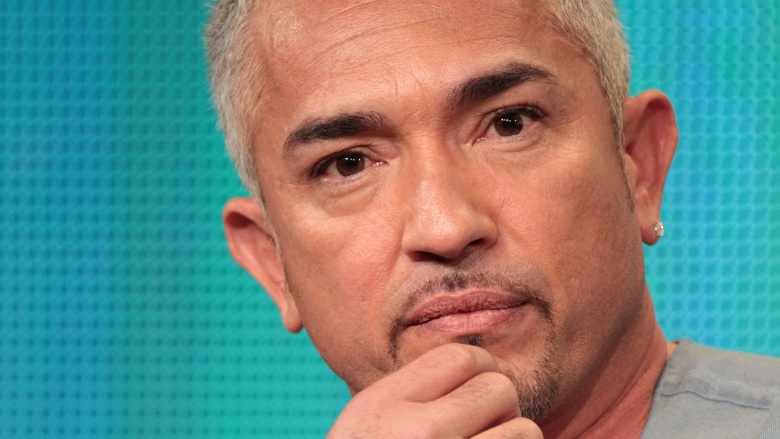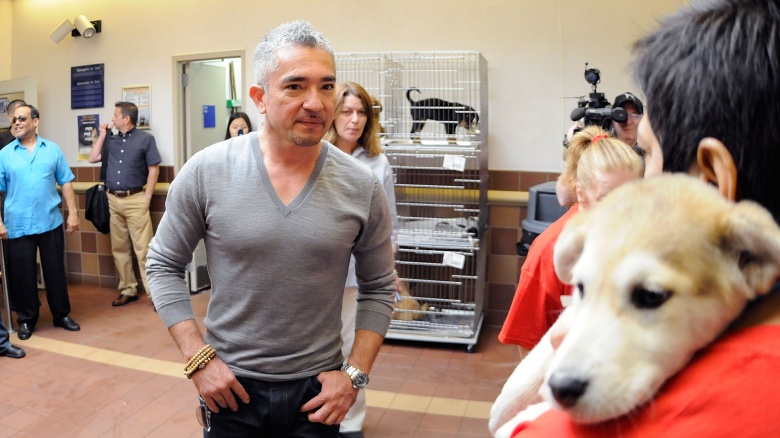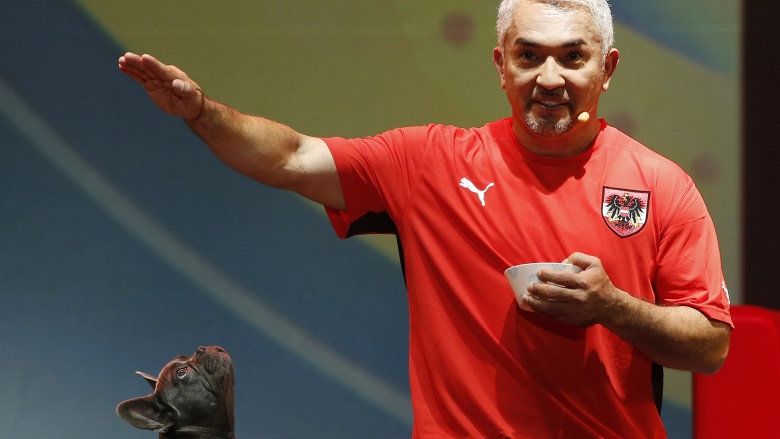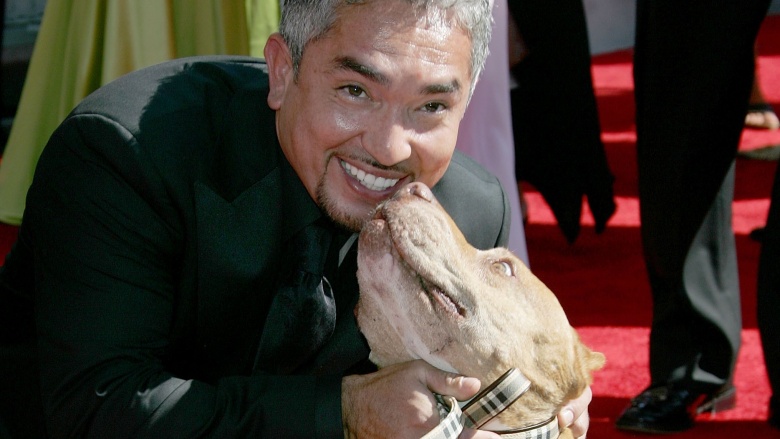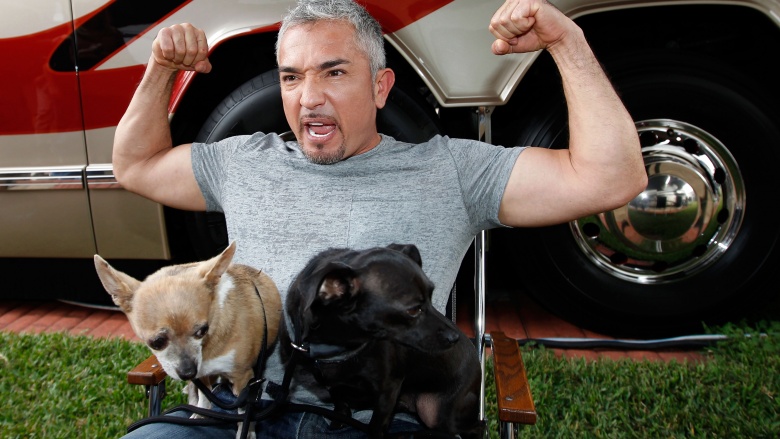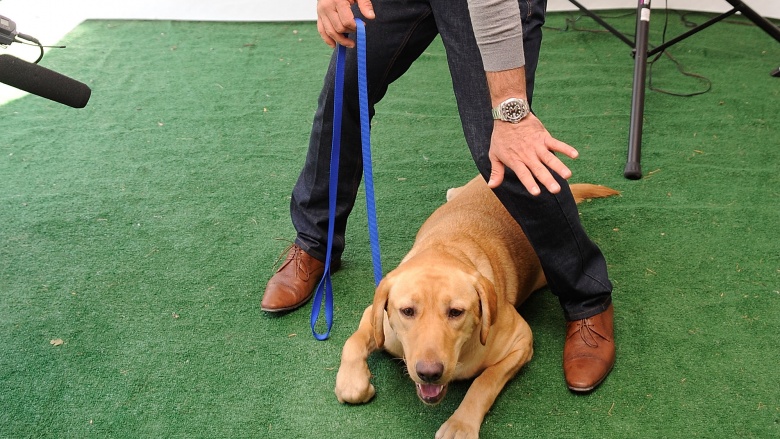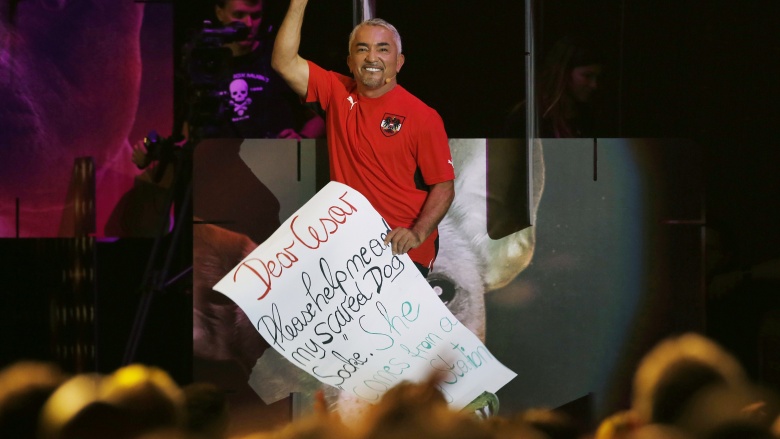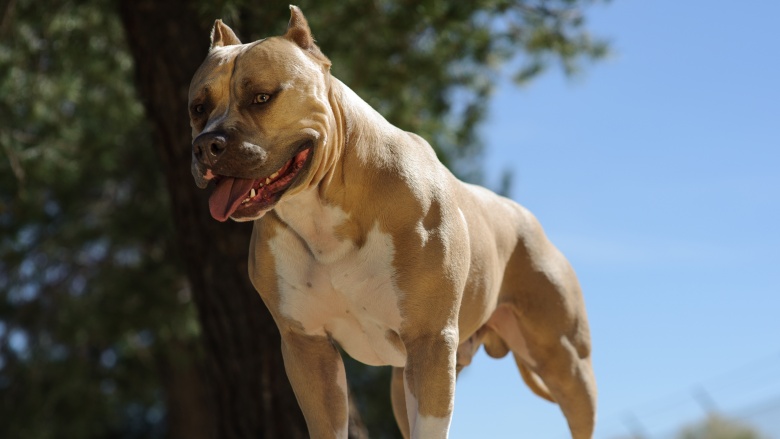The Untold Truth Of The Dog Whisperer
The story of Cesar Millan is often seen as a typical rags to riches tale, one about a young man breaking away from a simple life on a Mexican farm and crossing the border in pursuit of the American dream. While this is indeed exactly what happened, it's a simplistic way to summarize an extraordinarily eventful life. He became known to millions of viewers worldwide as the Dog Whisperer over the course of nine seasons on the National Geographic Channel, though off-camera, Millan's life has been anything but quiet.
He was bullied for his love of dogs
Millan grew up on his grandfather's farm in Sinaloa, in northwestern Mexico. During this time he became accustomed to working with a variety of animals, though he claims to have had a "natural way with dogs" from a very young age. This connection with canines was so strong that MIllan found himself being followed by dogs every time he left his home, a fact that didn't go unnoticed by the other kids. He was constantly teased by his peers, who started calling him El Perrero, which roughly translates to the Dirty Dog Boy.
He would not be discouraged
Millan refused to let the bullying change his mind about his love of dogs, ignoring the negativity and concentrating on making his dream a reality from a young age. By the time he was 13 years old he had laid out plans to become the best dog trainer in the world, and he didn't want to do it in Mexico. Inspired by the immaculately well-trained performing dogs he saw in TV reruns of Lassie and The Adventures of Rin Tin Tin, Millan set his sights on Hollywood, convinced his talents would be most welcome there.
He entered the US illegally
On December 23, 1991, a 21-year-old Millan told his mother he was departing Mexico for the United States, and that he wanted to leave immediately. After realizing he couldn't talk him out of it, his father emptied out his life savings and gave it all to his son, urging him to make his dream a reality. With a total of $100 to his name, Millan made his way to a Tijuana bus station and started looking for a way to cross the border.
He began by tailing coyotajes (professional people smugglers who specialize in getting illegal Mexican migrants into the United States) and their groups from a distance, hoping to follow their lead. He witnessed one such group attempting to cross using a flooded canal, watching in horror as elderly and pregnant migrants were swept away to their deaths. He walked the length of the fence for two weeks after that, eventually coming to a fresh hole being guarded by a man who wanted money before he would move aside. Entry cost Millan $100—every cent he had.
He was forced to live homeless
Millan entered the United States with no money, no friends, little to no knowledge of the English language, and nowhere to live. He spent his early days in America living homeless on the streets of San Diego, sleeping under a freeway and surviving on nothing but convenience store hot dogs. Millan recalled that he could get two hot dogs for 99 cents at the time, meaning all he had to do to survive was somehow make a dollar a day. Many hot dogs later, he managed to land his first real job Stateside.
He found work as a dog groomer
Using the first English sentence he ever learned ("do you have application for work?"), Millan managed to arrange some part-time hours in a local dog groomer's office. The owners were instantly impressed with his assertive handling of larger, aggressive dogs that had previously been impossible to control. Millan saw the value in this and, after moving to Inglewood, decided to start charging for a group dog-walking service. He quickly attracted attention with his unusual (and very much illegal) style of walking his group off leash, quickly earning a reputation as "the Mexican guy who can walk a pack of dogs." Some of his first clients were Will and Jada Pinkett Smith, who paid for Millan to have a year of English language lessons.
His reputation grew quickly
Millan and his dog walking business spread like wildfire by word of mouth, and he eventually earned enough money to open his Dog Psychology Center in South Central Los Angeles. His success at rehabilitating dogs with particularly troublesome pasts lead to him being profiled in a 2002 edition of the L.A. Times, and the reaction was huge. The story led a string of producers to his door hoping to create a new TV show showcasing Millan's techniques, and the trainer signed on to front Dog Whisperer with Cesar Millan soon after, with the National Geographic Channel picking up the show for 26 episodes after Animal Planet refused to commit beyond a pilot.
His dog Daddy used to belong to rapper Redman
American pit bull Daddy became an essential part of Dog Whisperer with Cesar Millan, not only as the host's loyal sidekick, but as a shining example of how any breed can be trained with the right methods. Daddy was famous for his remarkably calm temperament and his tolerance for smaller dogs, though what most people don't know about him is that he used to belong to Redman.
The New Jersey rapper had Daddy until he was four months old, though his grueling schedule of touring and recording meant that he didn't have time to train him properly. He was referred to Millan through a friend, and Daddy joined Cesar's pack. The pair struck up a bond immediately, and Redman eventually decided that the dog should remain in Millan's care.
He has been involved in a number of lawsuits
Millan was the subject of two lawsuits in a single week in 2006, the first involving his former publicist Makeda Smith and her partner Foster Corder. The couple claim that they came up with the name the Dog Whisperer while in discussion with Millan, and after they received no recognition of their contribution they decided to sue the National Geographic Channel, asking for $5 million in damages.
Millan was in hot water again days later when 8 Simple Rules producer Flody Suarez claimed that his five-year-old Labrador retriever Gator was subjected to inhumane treatment at the celebrity trainer's facility. Suarez's lawsuit stated that Gator was rushed to a vet just hours after being left with staff at Millan's center, covered with bruises and gasping for breath in an oxygen tent after being forced to run on a treadmill. The producer went on to describe how overuse of a choke chain had caused damage to Gator's esophagus and that surgery was needed to correct it, with the vet's bills totaling more than $25,000.
There have been numerous allegations of animal cruelty
The incident with Gator the Labrador is not the only allegation of animal cruelty Millan has faced. American Humane, the oldest national organization specializing in the protection of animals, revealed they had sent a letter to the National Geographic Channel in 2006 complaining about the "inhumane" and "potentially harmful" tactics employed on Dog Whisperer with Cesar Millan.
They referred to several instances of "cruel and dangerous" treatment of animals, flagging an episode in which Millan asphyxiates a dog by hanging it with choke chain before pinning it to the ground by its neck. Another letter from the director of the Animal Behavior Clinic at Tufts University accused National Geographic of setting dog training back 20 years.
Other critics of Millan's methods include certified animal behavior consultant and pet journalist Steve Dale, who refers to Millan as the Dog Screamer, and usually mild-mannered British television personality Alan Titchmarsh, who berated Millan over his "barbaric" techniques during an interview on his afternoon TV show.
He hit hard times in 2010
2010 was a terrible year for Millan, starting off in the worst possible way when his sidekick Daddy died of cancer at the age of 16. The gentle giant was not just Millan's assistant on the show, he was his best friend off it, though he had barely been given time to mourn the loss when he was hit with more bad news. The following month his wife of 16 years informed him she had filed for divorce.
Millan was forced to assess his finances, and that was when the third blow came: he soon realized that, despite being one of the most recognizable TV personalities in America at the time, he'd made a series of bad business decisions that had left him with little to show for his nationwide fame. To his horror he found that he only owned the rights to Dog Whisperer "t-shirts and touring," describing the news as "the biggest shock in the world."
He attempted suicide
Millan publicly pointed to 2010 as the lowest point in his life, though he didn't reveal the full extent of what he went through until 2012, when he opened up up about his attempt to take his own life. He claimed he lost his "source of calmness" when his beloved dog Daddy died, and the added pressure of his divorce and his financial woes sent him into a downward spiral of depression.
The famous trainer got to the point where he didn't want to be alive anymore, taking what he described as "a whole bunch of pills" and hoping not to wake up. Fortunately for Millan, his sons discovered him before it was too late and he was rushed to the hospital. He later talked about how regaining consciousness in a ward full of patients who loved his show helped him to get back on track with his life.
He used his own methods to bounce back
Millan was offered anti-depressants after his failed suicide attempt, though he decided that the best way to heal was to practice what he preaches. In place of pills, Millan devised a rehabilitation schedule based on his knowledge of pack life, using exercise, discipline and affection to conquer his depression, and it seems to have worked wonders. His path led him to new partner Jahira Dar (whom Millan credits as being instrumental in his recovery) and a series of new opportunities in television. He was soon back on our screens in Cesar Millan's The Leader of the Pack and Cesar 911, and has also found success working alongside his son Calvin in Nickelodeon's live action pre-school series Mutt and Stuff.
He has been back in trouble with the law
Millan found himself back in the spotlight in 2015, after a former resident of his Dog Psychology Center attacked a nurse on the street. Alison Bitney claimed to have suffered "disfiguring open wounds, deep muscle and tendon lacerations" when a pit bull named Gus mauled her just six days after being released from Millan's center—who, for its part, insisted that the animal was removed by its owner against the staff's recommendations. Bitney's subsequent lawsuit argues that the center is to blame for the attack, claiming that they willingly released a dangerous dog back into the public when the owner fell behind with payments, knowing that they were incapable of handling it.

